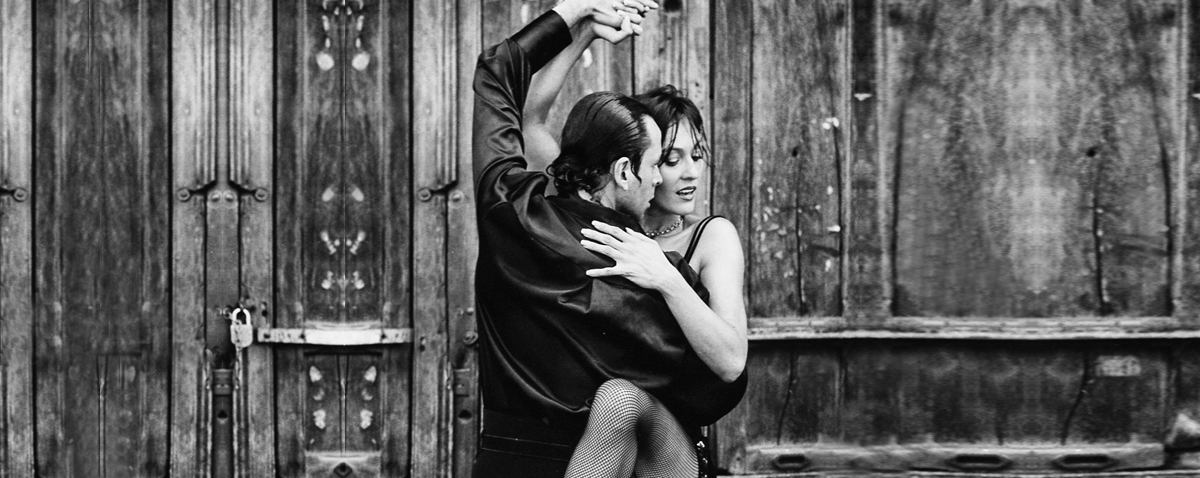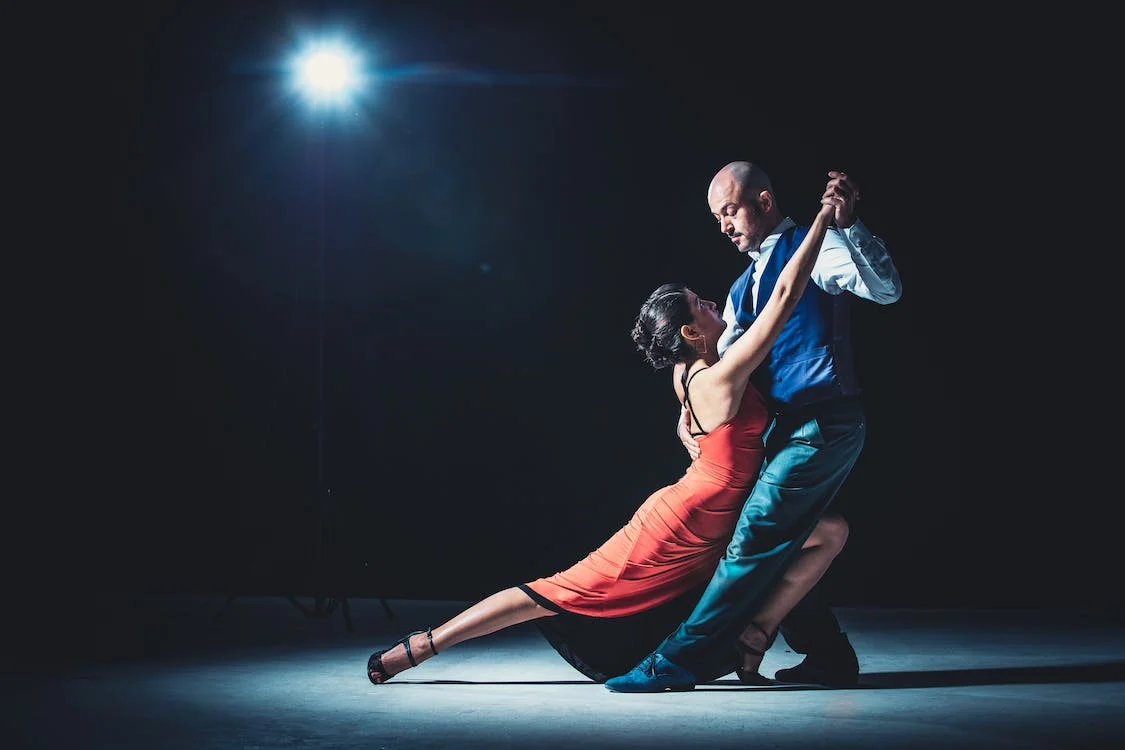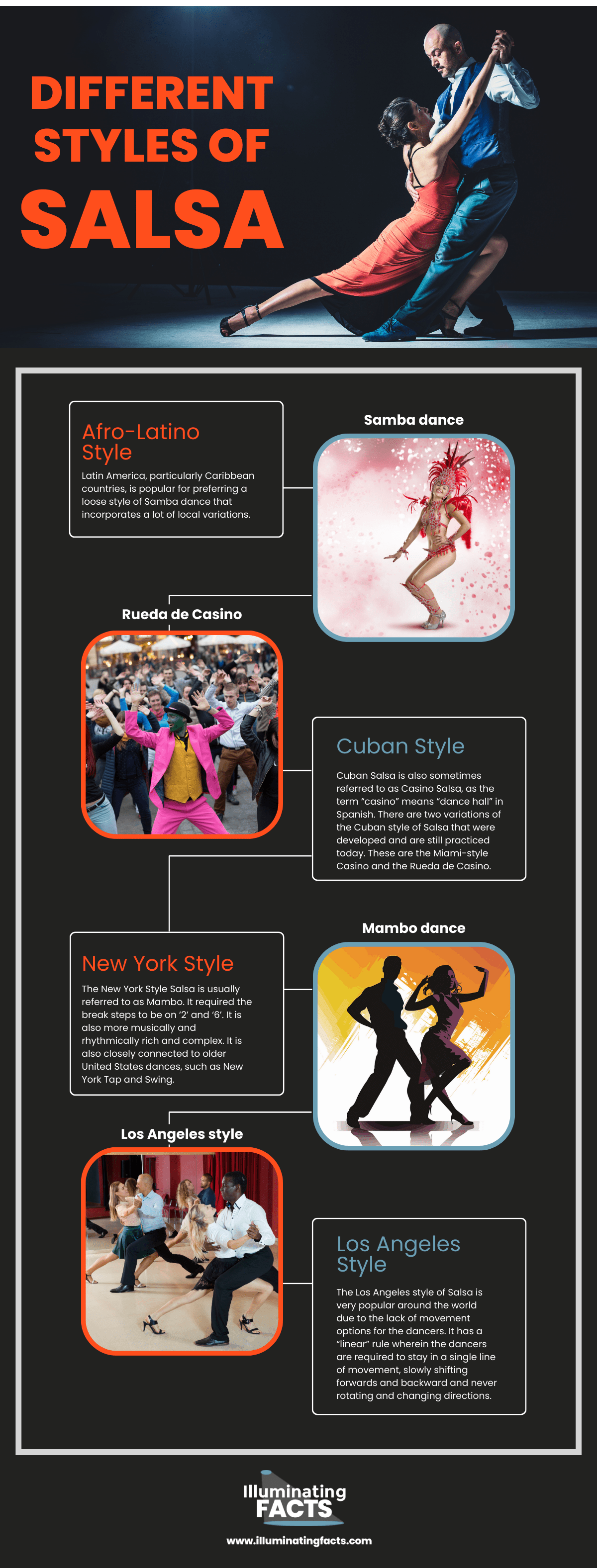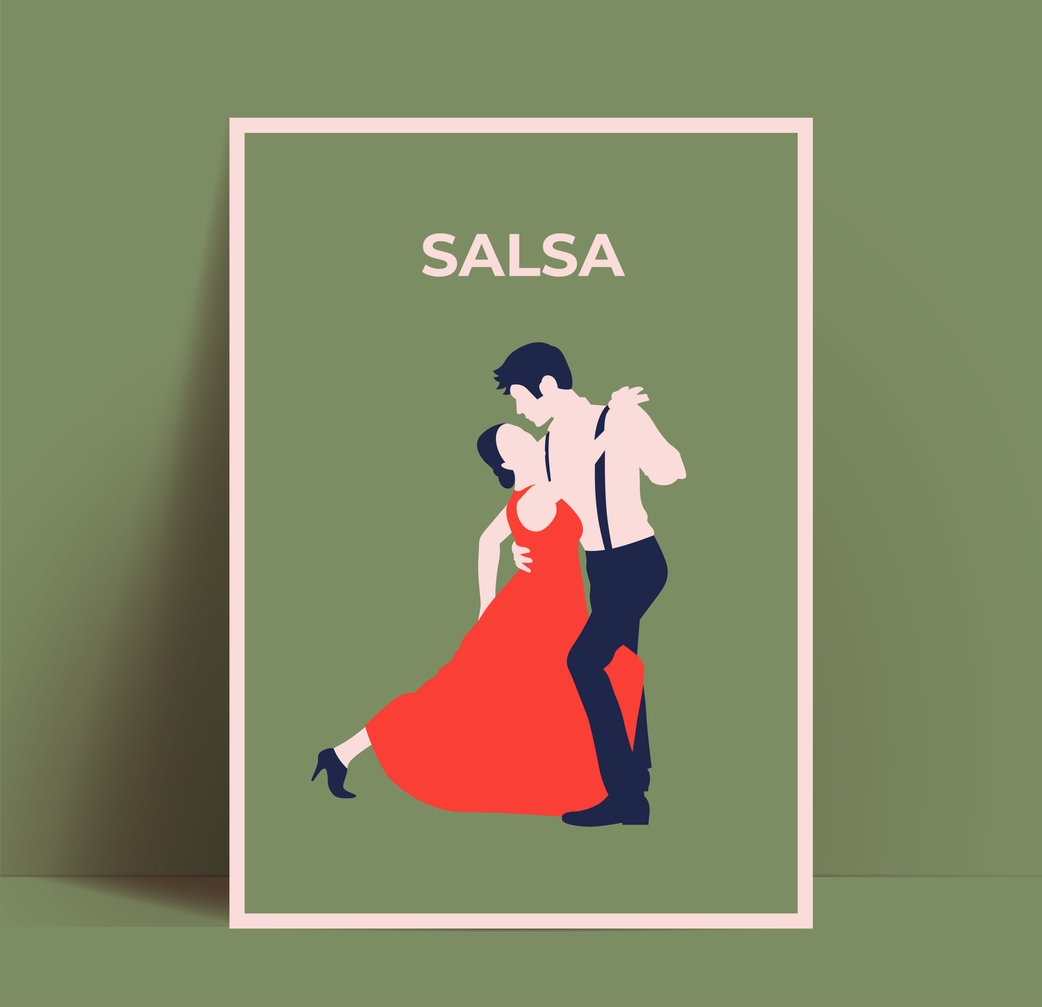Table of Contents
Background
There are many different types of dances in the world, representing different countries and cultures. One of the most popular dances in the world is Salsa dancing. It is a sexy, energetic, and fun partner dance, and very sociable, too. Unlike some partner dances, salsa dancing does not require you to have a regular partner. In fact, it is common for salseros to dance with people they have never met before, which is part of the fun of dancing Salsa. With its sociable nature, it has become very popular around the world. There are many Salsa clubs in different places in the world.
Salsa dancing is often associated with Latin American culture. However, its origins are not so straightforward. In fact, its history is a complex and multifaceted story that spans several continents and cultural traditions. If you are aiming to learn more about this dance, we are here to help you. In this article, we will explore the origin of Salsa dancing to understand its development from its earliest roots to its current form.
Roots of Salsa Dancing
The dance movements of Salsa originated from the Cuban Son dancing of the 1920s, particularly through the beat of Son Montuno with strong influences from the dance of Danzon, Mambo, Guaguanco, and other Afro-Cuban folkloric dancing. At the present time, there are lots of different styles of Salsa dancing due to geographical dispersion and cultural syncretism. Read on to learn more about the roots that contributed it its popularity today. [1]
Cuba and Its Culture
Salsa dance is among the “newer” dance genres, but it is still fairly old. Its rich history dates back to almost a hundred years on the island of Cuba. The origins of salsa involve a lot of conflicting information. Some believe that it originated in New York City, while others say that it is from the Caribbean. But according to most experts, the earliest version of Salsa dance originated in Cuba back in the 19th century. [2]
Before Salsa became popular, there were already a lot of different popular Latin dances in Cuba, such as Flamenco, Mambo, and Tango. Based on historians, Salsa dance was introduced in Eastern Cuba in the 1900s. The traditional Salsa dance in Cuba was made by combining Danzón, which is a dance style by French and Haitian immigrants, Són, a traditional Cuban dance style, and Rumba of African slaves.
In the 1920s, Danzón was the main dance style in Cuba. Eventually, it was infused with different dance influences, which include the Són and the British contra dance. Són, which originated in Santiago de Cuba, is a combination of African percussions like the kiribá and nengón. As Són became popular, it was infused with another prominent dance style, which is Rumba. During this time, Rumba dominated the music scene in Old Havana. The combination of the musical instruments of these dances became the basis of a unique rhythm that would later be known as salsa. [2]
It took a lot of years before the rhythm of Salsa became popular in Cuba. But when it did, it became a local sensation that is often performed at festivals. In just a few short years, both Salsa music and dance became very well-known and loved in Cuba.
In 1898, during the Cuban War, Americans flooded the country and a lot of U.S. soldiers unsurprisingly loved the local dance scene and were taken by the infectious new dance style. After the 1898 Cuban War, visiting American jazz musicians carried the exotic island dance style stateside.
Salsa remained a local sensation for a lot of years. According to most experts, its popularity beyond Cuba began in the 1950s when Cuban migrants brought their music with them to the United States, specifically in New York and Miami. [2]
The African Influence
In addition to the Cuban roots of Salsa dancing, it has also been influenced by Africans. The emphasis on drumming in Salsa music is vital. African slaves, who were brought to the area contributed to the development of Salsa with traditional drumming. [3]
Aside from that, call-and-response singing is also present in Salsa music. This style originated from Africans who were popular when it came to forming and emphasizing the relationship between music and language. Mostly executed by drums, the Africans created the “talking drums,” which inspired a component of Salsa music. Possibly the most vital influence is the correlation between music and dancing. Salsa is the main aspect of Latin dance music, and there is surely a connection seen between African and Latin dance steps. [3]
The Spanish Influence
As mentioned earlier, the Són is among the roots of Salsa. It combines the elements of the Spanish guitar-playing tradition with the rhythmic complexity and call-and-response vocal tradition of African musical sources. [4] Read on to learn more about Són and its relevance to Salsa dancing.
History of the Són
Són Cubano is a style of Afro-Cuban music that forms the foundation for most forms of salsa music and Latin jazz. In English, Son Cubano translates to “the Cuban sound.” It describes a well-known music genre that was created in the highlands of eastern Cuba using both European and African instruments and musical customs. [5]
This type of music draws melodic and harmonic language from Spanish guitar and vocal music. It has a popular percussion section that features congas, bongos, claves, timbales, and more, which traces mainly to the Bantu region of central Africa.
Son Cubano was created from folkloric music in the Sierra Maestra of Cuba’s Oriente province. These folkloric styles include nengon, changui, rhumba, regina, and kiriba, which were part of the Cuban culture that traced their ancestry to central Africa’s Bantu region. [5]
Bantu Cubans interacted with West African Cubans when they moved to Havana, which is the country’s capital. In Havana, Son Cubano emerged from the integration of different African musical traditions with those from Spain. With the influence of common dances in Havana, like mambo, guaracha, and bolero, Son Cubano evolved. [5]
The musical movement of the Son was very creative and convincing, and it was capable of producing its own instruments, interpreters, authors, and even its original choreography. It is a dance that is very similar to the way that people dance Salsa today. [6]
Evolution of Salsa Dancing
Now we know the roots of Salsa dancing, it is also important to note that it evolved from different types of dance forms, such as Mambo and Cha-Cha. In addition to that, it was also enriched with Puerto Rican influences of dances Bomba and Plena. Read on to learn more about the evolution of Salsa dancing.
The Emergence of the Mambo
Mambo is also a Cuban music style that originates from the danzon tradition. In a lot of Latin American countries, the style is called danzon-mambo. It combines elements of popular Latin dance genres with the musical sophistication of the Son Cubano genre, which is the bedrock of the broader musical style known as Salsa.
It was in Havana where the mambo style evolved. It is also where leading charangas, an ensemble that plays Cuban dance music, popularized the style in the 1930s. During those times, Cuban flutist Antonio Arcaño pioneered mambo music. He was a band leader of Arcaño y sus Maravillas, which was a danzon orchestra or charanga. Along with his orchestra’s main composers, he took standard danzon Cubano, which added rhythmic syncopation to a popular dance style. [7]
Mambo became a popular dance worldwide. Damaso Perez Prado, a big band leader, brought mambo to international popularity. He was often referred to as the King of Mambo, as he brought the mambo dance and musical genre to wide audiences because of the hits like Mambo No.5. By the late 1940s, both mambo music and dance had gained favor in the United States. [7]
You might wonder what the difference is between Mambo and Salsa. The difference between the two is that mambo is a sub-genre of Salsa. The term “salsa” evolved to describe a wide array of musical styles from Cuba, the Caribbean Isles, and Venezuela. These styles include rumba, danzon, Son Cubano, Cha-Cha, folkloric music, bolero, merengue, and even forms of Latin jazz. [7]
Development of the Cha-Cha
Salsa and Cha-Cha are closely-related families of Latin dances from Cuba. In the 1950s, Cha-Cha and Mambo first became popular in the United States. While Cha-Cha is pretty much danced in its original form at the present time, Mambo saw further development, and it evolved into Salsa in the 1970s. [8]
The Cha-Cha dance was also invented in Cuba, and it grew out of the Cuban Triple Mambo. In the early 1950s, an English dance teacher named Pierre Lavelle saw dancers performing this triple step to slow rumba and mambo music during his visit to Cuba. He took the dance back to Britain and taught it as a separate dance that sooner or later became what we know today as Ballroom Cha-Cha. In 1954, the dance was introduced to the United States and quickly became the latest craze, which pushed the Mambo aside. [9]
Salsa in the United States
In the United States, Salsa music and Salsa dancing originated in the inner city neighborhoods of New York City. The emergence of Salsa was dependent on the vibrant Latino immigrant communities that were settled in East Harlem. These communities implemented their specific heritage’s musical influence into their salsa music.
Even though Salsa music was developed in the United States, it had a specific Latin sound. It’s because the original rhythm of Salsa is the son clave, which is mainly a Cuban rhythm. Salsa also involves a lot of percussion, which include the use of maracas, cowbells, tamboras, and bongos. It also contains other instruments, including saxophones, bass, trombones, trumpets, piano, and guitars. [10]
Different Styles of Salsa
A lot of musicians and music historians have distinguished that Salsa and other Latin dances are very adaptive and receptive to change. It has the ability to transform styles not only according to modern dance fashion but as well as with influences of social, political, and economic changes.
Since the early days of Salsa back in the 1920s, it was predominantly influenced by various music genres that were popular in Cuba and Puerto Rico. The popularization of the dance outside these countries allowed it to transform fast, with fast major styles evolving in several music hubs of the United States and South America.
All of the new styles of Salsa that were created after the 1920s are named by the geographical area they originated from. Below are some of the most popular styles of Salsa music that are danced today around the world:
Afro-Latino Style
Latin America, particularly Caribbean countries, is popular for preferring a loose style of Samba dance that incorporates a lot of local variations. This includes changes in the way dancers control their arms, spins, legwork, hand styling, body movement, shimmies, lifts, rolls, acrobatics, and isolations.
It is closely linked with the Afro-Latino origins of the dance, which gives it a unique identity. Most of the time, this dance style is accompanied by a traditional African instrument or language, which provides the Salsa performances a unique personality that is not found in other styles of dance. It is usually performed in countries of Cuba, Puerto Rico, Haiti, and as well as Colombia, Venezuela, and other Latin countries. [11]
Cuban Style
Cuban Salsa is also sometimes referred to as Casino Salsa, as the term “casino” means “dance hall” in Spanish. There are two variations of the Cuban style of Salsa that were developed and are still practiced today. These are the Miami-style Casino and the Rueda de Casino.
The Miami-style Casino is the Salsa dance style that introduced several elements of American culture into the Salsa. The largest addition is the introduction of the diagonal move, which forces the dancer to move back and diagonally. It encourages dancers to remain still and relaxed as their feet and hands perform elaborate routines. [11]
Rueda de Casino, on the other hand, is a Salsa dance style that originated in Havana, which is the capital city of Cuba. It requires the presence of some pairs of dancers to form a “rueda” or circle and follow the instructions of a single dancer who calls out the moves. [11]
New York Style
The New York Style Salsa is usually referred to as Mambo. It required the break steps to be on ‘2’ and ‘6’. It is also more musically and rhythmically rich and complex. It is also closely connected to older United States dances, such as New York Tap and Swing. The influence of these dances allowed dancers of this style of Salsa to showcase their skills in dance that promotes very visually attractive dancing. It promotes moves like body waves, shimmying, shines, ribcage movements, and freestyle footwork. [11]
Los Angeles Style
The Los Angeles style of Salsa is very popular around the world due to the lack of movement options for the dancers. It has a “linear” rule wherein the dancers are required to stay in a single line of movement, slowly shifting forwards and backward and never rotating and changing directions. It is done so that many pairs of dancers are able to dance safely and perform their routines even on a crowded dance floor.
This style of Salsa is also heavily influenced and has taken characteristics from other dances, including Swing, Ballet, Argentine Tango, and Latin Ballroom dance. LA Style is usually eye-catching and spectacular to watch. [11]
Interesting Facts About Salsa Dancing
The origins of Salsa dancing are indeed complex as it originated from other popular dances in Latin America and was influenced by other music and dances from other parts of the world. At the present time, it is being enjoyed by a lot of people, from Salsa dancing competitions to Salsa festivals and classes. If you are aiming to learn more about it, below are more interesting facts about Salsa dancing that you need to know:
- The origin of the name “Salsa” is unknown. While the dance is named after the style of music, no one really knows why it was called “Salsa.” Some believe that the name comes from the food since it has elements from a lot of cultures, much like salsa has a lot of ingredients. But others say that it is because the movements of the dance are hot and spicy, like salsa. [12]
- When you dance Salsa, it is all in the lower body. During the whole dance, the upper body is level, and all movement takes place in the lower body, which leads to the swinging hip movements Salsa is popular for. [12]
- Even though Salsa has Latin roots, the term “Salsa” was first coined and popularized in the United States particularly, in New York City. Also, many of the best Salsa dancers in the world live in the U.S. The Salsa hot spots in the states are Los Angeles, New York, the San Francisco Bay Area, and Miami. [13]
- Salsa dance originated in Cuba in the early 20th century, but it was popularized in the United States during the 1960s. [14]
- There are also different styles of Salsa music. Some of these include Salsa Dura, Salsa Romantica, Latin Jazz, Timba, pop salsa, and salsa choke. [13]
- El Gran Combo de Puerto Rico, or El Gran Combo, is one of the most famous Salsa bands. They have been active since 1962 and have won the Latin Grammy Award for Best Salsa Award. [14]
- Salsa has a lot of benefits. One is that it can be a great workout, helping you burn more than 400 kcal per hour. In addition to that, Salsa can also help dancers in building endurance and gain immense stamina along with an improved heart rate. [14]
- Salsa dancing can also help relieve stress and allows the body to release hormones like dopamine, serotonin, oxytocin, and endorphins, which are all scientifically proven to be responsible for well-being. [14]
- Salsa dance is an integration of different dance types. It represents how an art form like dance can bring everyone together, regardless of race or ethnicity. [14]
- The basic rhythm of Salsa dance is composed of three steps with every four beats of music. [14]
Conclusion
The origin of Salsa dancing is truly rich and fascinating. The dance reflects the diverse cultural influences that have shaped its dynamic dance style. From the African rhythms of the Caribbean to the Spanish guitar melodies of Europe, the dance has indeed evolved through centuries of cultural fusion and creativity.
At the present time, Salsa continues to captivate dancers around the world with its energetic beats, expressive style, and graceful movements. Learning about the history of Salsa dancing gives us a chance to better appreciate the cultural richness and diversity of our world. We hope this article helped you further understand the origin of Salsa dancing.
References
[1] Dance Shoes Store Editors. (2023). Home. DanceShoesStore.com. Retrieved April 4, 2023, from https://www.danceshoesstore.com/About-Salsa-Dance_ep_55-1.html
[2] Lee-Almazar, T. (2020, July 23). Part I: History of Cuban salsa dance. Yami Dance Shoes. Retrieved April 4, 2023, from https://yamishoes.com/blogs/dance-shoe-details/history-of-cuban-salsa-dance
[3] Rivera, I. (n.d.). Salsa. Casa Museo Ismael Rivera. Retrieved April 4, 2023, from https://college.holycross.edu/projects/museo_rivera/music/salsa.html
[4] Cashion, S. V. (2021, September 24). Salsa. Encyclopædia Britannica. Retrieved April 4, 2023, from https://www.britannica.com/art/salsa-music
[5] MasterClass, E. (2021, November 3). Guide to Son Cubano: A brief history of the Son Cubano genre – 2023. MasterClass. Retrieved April 4, 2023, from https://www.masterclass.com/articles/guide-to-son-cubano
[6] Fernando Lamadrid, J. (2005). History and development of the Cuban son ~ salsa music history, styles and rhythmic patterns ~ www.justsalsa.com. Just Salsa. Retrieved April 4, 2023, from http://www.justsalsa.com/salsa/music/son/
[7] MasterClass. (2021, November 3). Mambo Music Guide: A history of mambo’s Cuban origins – 2023. MasterClass. Retrieved April 5, 2023, from https://www.masterclass.com/articles/mambo-music-guide
[8] Enge, N. (2020). Salsa & Cha Cha. Library of Dance – Salsa & Cha Cha. Retrieved April 5, 2023, from https://www.libraryofdance.org/dances/salsa/
[9] Astaire, F. (2017, February 28). History of the Cha Cha. Fred Astaire Dance Studios. Retrieved April 5, 2023, from https://www.fredastaire.com/blog/ballroom-dances/history-of-the-cha-cha/
[10] Rosengap, E. (2014, May 8). Salsa In The United States. Latin American Music in the US Salsa in the United States Comments. Retrieved April 5, 2023, from https://sites.lafayette.edu/mus236-sp14/2014/05/08/salsa-in-the-united-states/
[11] Dance Facts. (2020). Salsa dance. Salsa dance, one of the most popular Latin Dances. Retrieved April 5, 2023, from http://www.dancefacts.net/salsa/salsa-dance/
[12] Horvath, R. (2022, May 30). 5 things you didn’t know about salsa dancing: Salsa dance facts. Carolina Dance. Retrieved April 5, 2023, from https://carolinadance.com/about/news/five-things-you-didnt-know-about-salsa-dancing
[13] Young, T., & Jain, S. (2023, February 21). 7 things you didn’t know about Salsa dancing. Salsa Vida. Retrieved April 5, 2023, from https://www.salsavida.com/articles/salsa-dancing-facts/
[14] Kidadl Team. (2022, March 15). Captivating salsa dance facts that all dancers should know. Kidadl. Retrieved April 5, 2023, from https://kidadl.com/facts/captivating-salsa-dance-facts-that-all-dancers-should-know






